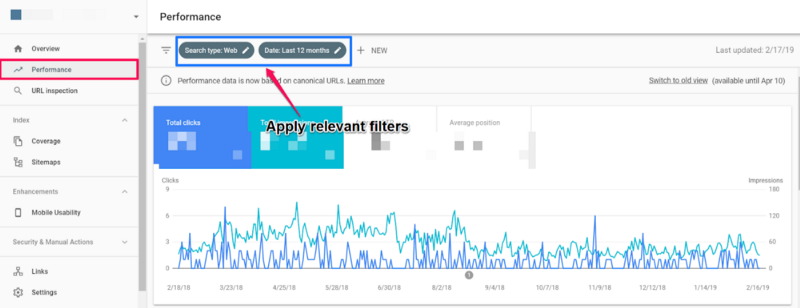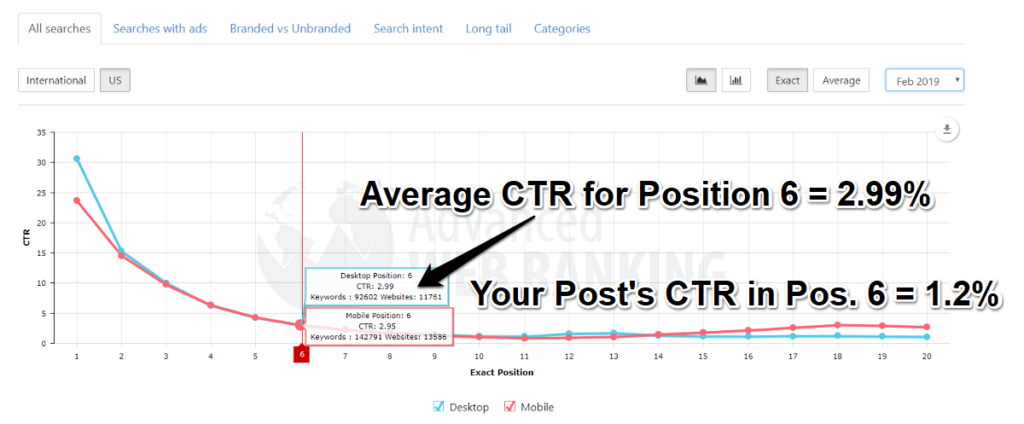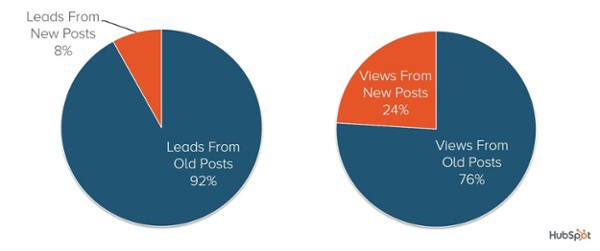
To illustrate the business case for updating website content, I’ll start by presenting two advertisements for your hypothetical purchasing consideration.
I’ll continue by demonstrating just how easy and effective it is to update old content with a few examples.
But let’s get back to those two ads.
As you consider these ads, keep in mind that the (extremely) basic math behind this idea holds up even if you add another zero (or two) to the cost and/or results of these ads.
The Two Ads
Ad A
Cost: $150
Per Year Results: 12,000 impressions, 120 clicks, and 1 lead.
Ad B
Cost: $200
Per Year Results: 12,000 impressions, 214 clicks, and 1.78 leads.
The Bottom Line: Want to pay $150 for 1 lead/year? Or $200 for 1.78 leads/year?
This is The Choice You’re Making When You Publish
From a pure search perspective, before you create any type of content you’re deciding between Ad A and Ad B.
Yes. This is an oversimplification, but stick with me.
Let’s take an example: An evergreen blog post written to increase brand awareness by driving organic traffic.
Assume that this blog post will cost $150 to produce. Also assume, by using Google Search Console, you know that the post generates 12,000 impressions and 120 clicks per year in Google’s search results.

One more assumption: with the goals you have set up, you can tell from Google Analytics that the post brings in 1 lead each year.
In other words, if you wrote this evergreen post and never touched it again, you bought Ad A when you could’ve bought Ad B.
Because if you take that same evergreen post, periodically analyze its performance, and optimize it accordingly based on your goals, you can increase the value that blog post brings to your business for far less money than it takes to produce new content.
Sounds easy… and it is. If you know where to look for these optimization opportunities.
So let’s extend our example a bit.
3 Months Later…
Imagine that three months go by and that $150-blog post I just referenced is humming along, generating its 1000 impressions and 12 clicks per month.
By the way, its average position is #6 (that’s also data that Search Console will give you).
That 12 click per 1000 impressions amounts to a 1.2% CTR.
If you looked at the average CTR — which is 2.99% — for results in that position according to Advanced Web Ranking’s data, you’d know that your blog post’s CTR is well below average.

It’s so below average, in fact, that just by increasing CTR to the average on this post, you’d attract 94 more clicks and 78 hundredths of a new client per year, an increase of 78.3%.
In other words, you’d be buying Ad B, a much better deal than Ad A because you’re paying $200 for 1.78 leads ($112/lead) rather than $150 for 1 lead ($150/lead).
Don’t Get Distracted by the Numbers
Obviously, you can’t do much with .78 leads. And I’m not saying to pay $150 for a blog post and $50 to update that post.
Truthfully, I have no idea how much you should pay.
I don’t know your industry, your business, or the capacity of your existing team. But I do know this to be true:
You can update old content and get results with far fewer resources than it takes to create new content.
And that’s not even the best part.
Because this doesn’t just cost less. It’s also less risky because you can make your optimization decisions based on real data specific to the content in question.
To see how, think back to our example of the evergreen blog post with low CTR.
You might discover you can increase the low CTR of that post by tweaking the meta description or title based on the keywords Search Console tells you are generating impressions of that post.
And while I won’t say that’s easy to do, there are precious few ways you can reliably and quickly increase organic traffic that are less time-consuming than updating a meta description and/or title.
This Isn’t About Meta Descriptions or Search Traffic
HubSpot published this post four years ago.
It’s a long post but well worth the read.
The gist of it is that by looking at old content from a variety of different analytical angles, HubSpot’s blogging team discovered optimization opportunities on old content that could (and did) drive an absurd amount of visitors and leads.

One of many data points HubSpot found that emphasize the potential impact of older posts.
To illustrate what a wide variety of opportunities analyzing old content unearths, here’s a specific example of how HubSpot went about this.
Conversion Optimization on Old Posts
Since HubSpot’s team knew they’d expanded their content offers since their older blogs were published, they decided to look for old posts that might align better with one of their new content offers.
To do so, they looked at the keywords that were driving traffic to the old posts that were potential candidates for one of their new content offers. By looking at the words people used to find their content, the HubSpot team got inside of their readers’ heads. That helped HubSpot understand their readers’ intent when they arrived on a certain page.
Or as HubSpot’s Pamela Vaughan put it:
Knowing that the primary referral source of traffic to these posts was search engines like Google, we figured we could much more accurately understand and satisfy the needs of our blog visitors by matching the offer we promoted in the post with the keywords people were using to find it.
By doing that, we were able to match the newer, more relevant content offers to old blog posts.
And this is what she said about their results:
Using this keyword-based conversion optimization methodology, we increased the conversion rate of the post by 240%. In other words, this post generates 3X more leads now than it did before we conversion optimized it. Then we tried it on 12 more of our top-trafficked posts, and we doubled the number of leads we generated from them.
In fact, of the 75 posts we’ve conversion optimized using this method, we’ve increased the conversion rate on every single one.
A New Part of Your Content Marketing Strategy
Vaughan points out that she’s not advocating for updating old content at the expense of creating new content. And neither am I.
Rather, you should make updating and optimizing old content based on new data a part of your strategy moving forward.
More importantly, you should understand that content doesn’t have to be static. It can (and should) change into something better if you discover data that tells you something new about the needs of your users.
Ever gotten absurdly awesome results from updating old content? Or have you tried and failed?
Either way, I wanna hear about it. Let’s chat in the comments below.
